How to Take Cat Photos That Will Attract and Amuse

Besides just entertaining their owners with their incredible motions and funny positions, cats are also perfectly capable of posing for some beautiful portraits. So we’ll show you some basic tips for photographing these teatime tigers as effectively as possible.
What’s the best kind of camera to use? The one you have at hand. You can photograph your cats with a phone, or with a compact, or even a DSLR if it’s around.
(Actually, to get the very best photos, using a DSLR, along with fixed lenses that have speeds in the f/1.4 to f/2.8 range, is a good choice; these lenses will let you blur the cat’s background.)

I lit this picture using a flash turned behind me and reflected off the ceiling. That way I could light up the whole scene and provide some detail for the fur and eyes.
Nikon D7100 + Sigma ART 18-35mm 1/250 f/2.8 ISO 100, focal length 52 mm (EQ 35: 35mm)
A flash is one thing that’s a huge help when you’re photographing cats. But direct light from a flash tends to be very sharp.
How can you soften it? Aim the flash head at the ceiling; this will cast diffused, reflected light at the cat instead of direct light. Or use a diffuser. A flash will wonderfully enrich the picture’s shadows, and will sharpen its details too.
The Right Angle of View
The golden rule for all pictures of your pets—not just your cats—is to lower yourself down to their eye level. This gives your photo more depth of field, helping your pet to really stand out.
Always try to photograph your cat “eye to eye”—and if possible, also as far away as you can be from their background. Then use a low f-number, and the background will be blurred, once again helping your cat to stand out.
If your cat is more than just a “couch cat”—if it loves trips around your garden as well—then use a telephoto lens to photograph these. With this kind of lens, you’ll zoom in on the cat, while once again blurring the background just how you need.
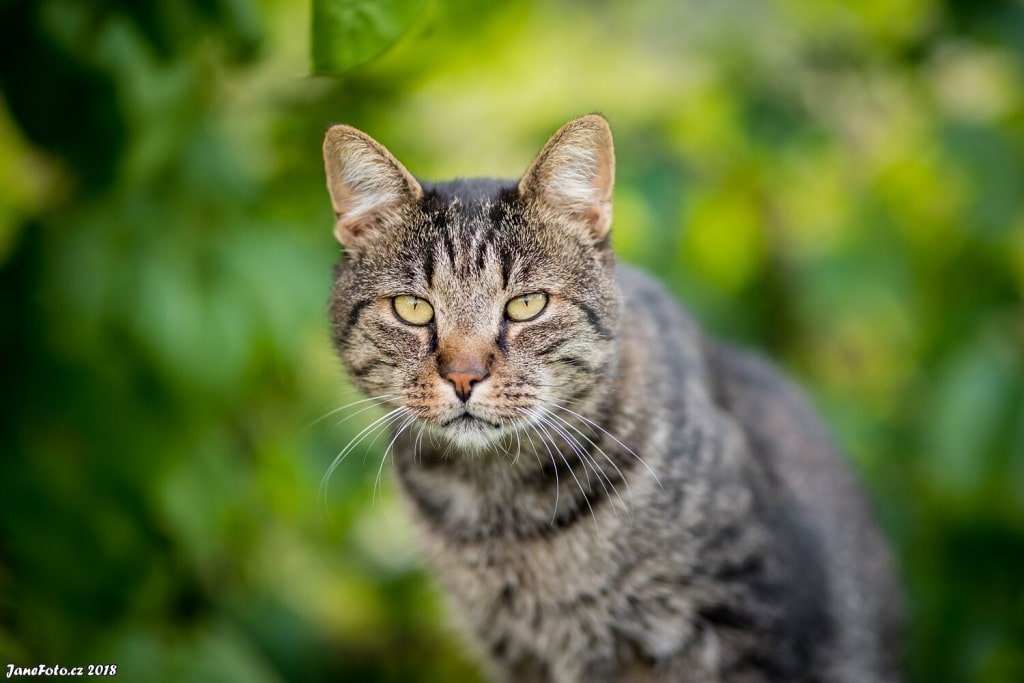
Nikon D750 Sigma ART 85mm f/1.4 1/320s ISO 400 f/1.4; the cat was slightly in motion, shortening the exposure to 1/320 s to ensure that the picture would stay sharp. (Author: Jana Mackova, janefoto.cz)
Don’t hesitate to lay on the ground for your shot. A photo of a cat in the grass takes on a hint of “wildlife” photography, with a miniature predator.
Try out different angles while taking your pictures—for example a direct view of the cat from above, where it’s looking into your lens.
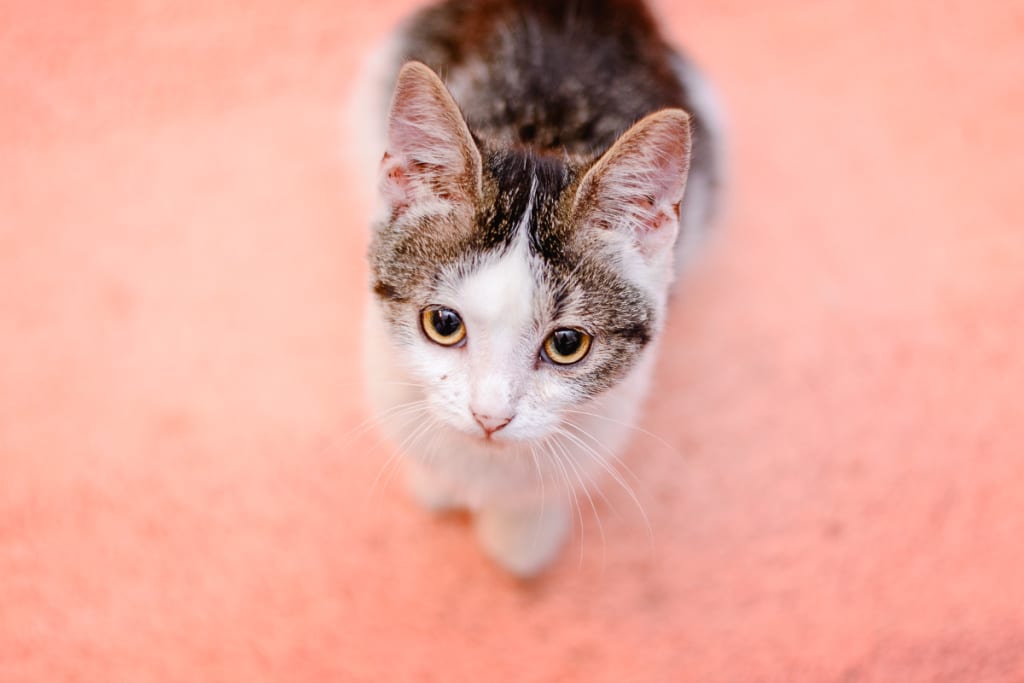
Nikon D7100 + Nikkor 50mm f/1.8 AF-S 1/60 f/1.8 ISO 200, focal length 75 mm (EQ 35: 50 mm)
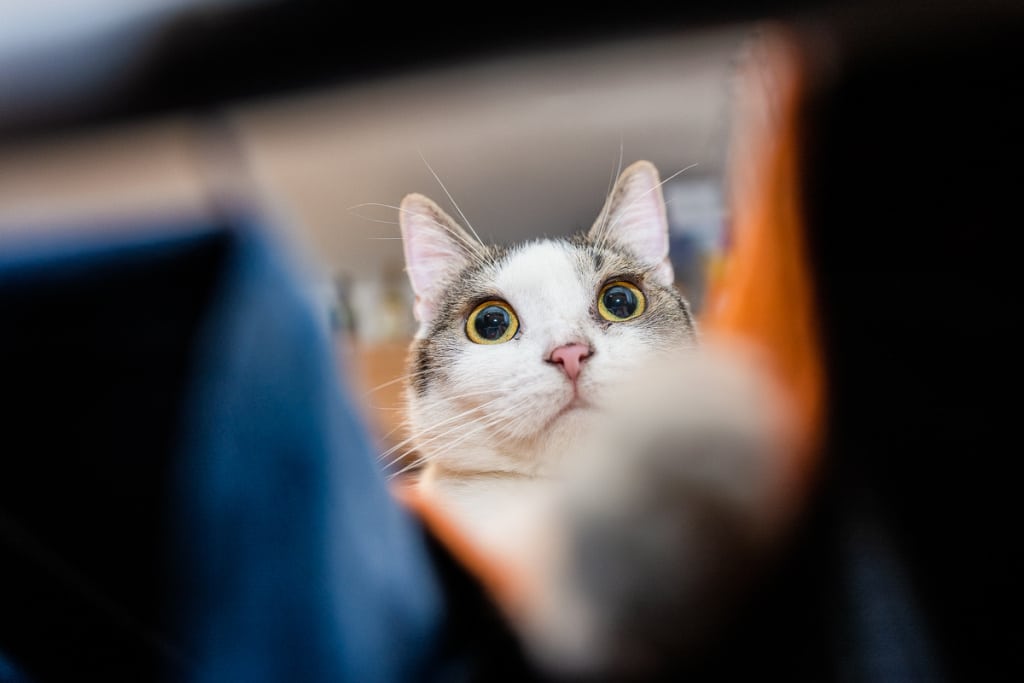
Nikon D7100 + Nikkor 50mm f/1.8 AF-S 1/60 f/1.8 ISO 200, focal length 75 mm (EQ 35: 50 mm)
Cat Yoga
Cats are famous for entertaining everyone around with their awkward contortions while cleaning themselves. Take your camera and document your cat’s yoga! This is perfect for entertaining your friends on social networks.
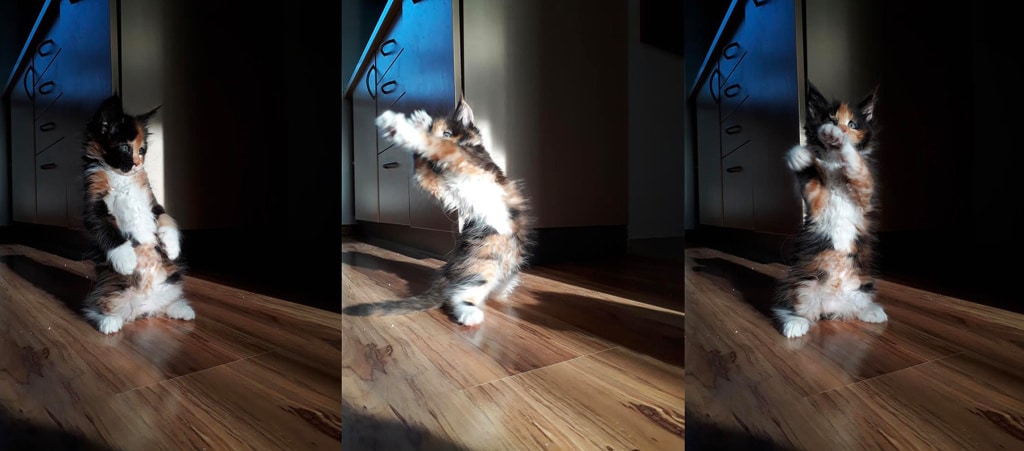
Samsung A3 (Auhor: Veronika Batkova, lioncreek.webnode.cz)
Here again, don’t be afraid to go down to the level of the cat’s eyes when taking your pictures. When your cat is doing its yoga up on a scratching post or in a cat bed, feel free to take your pictures from a chair.
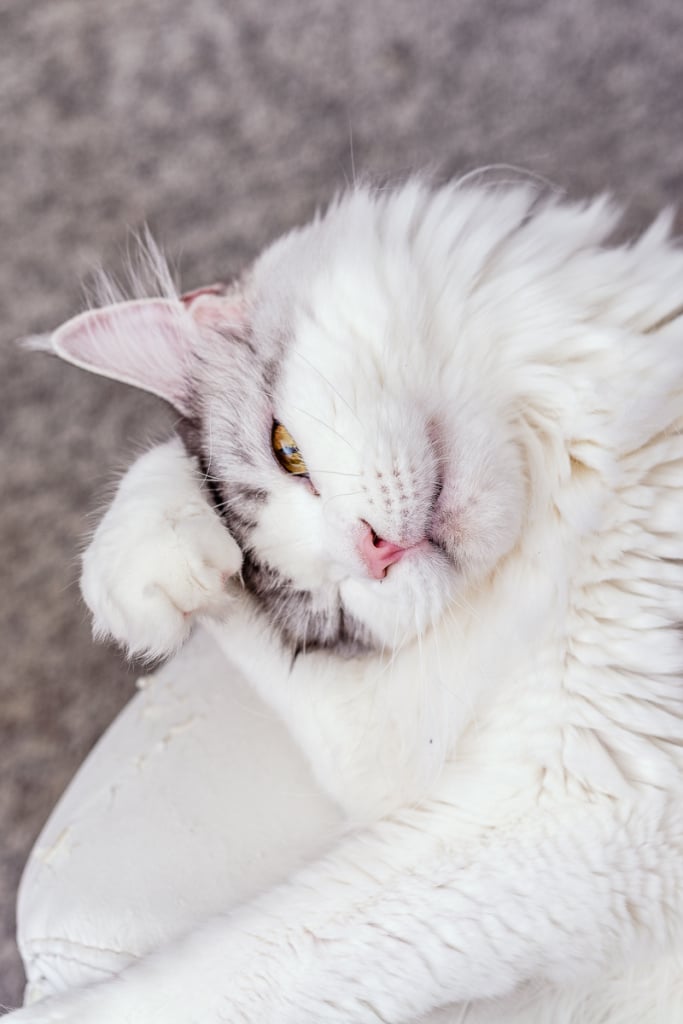
Nikon D7100 + Sigma ART 18-35 f/1.8 1/250 f/2.8 ISO 100, focal length 52 mm (EQ 35: 35mm)
Sweet Dreams
These little tigers can sleep for hours on end. And meanwhile they choose the strangest of positions—ones you’d never dream of. So take advantage of this to get some interesting and comical photos.
Come up to them as quietly as you can, so that you won’t wake them up. It won’t be entirely easy, but with a little practice, you can do it, and the picture is worth it. Worried you’ll wake your cat up? Once again, reach for a telephoto lens—it will let you photograph the cat from farther away.

Nikon D750 + Sigma ART 35/1.4 1/400 f/1.4 ISO 400 – The light has wonderfully brought out the cat’s details, and so it was better to choose a high ISO for a fast shutter speed, to keep the picture sharp, instead of trying to add light from a flash, with the risk of disturbing the cat. (Author: Jana Mackova, janefoto.cz)
The Humble Cat-sports Photographer
Cats are very fast animals, and they often do amazing somersaults and loops in the air when they’re playing with their toys. And that’s another good moment to pick up your camera and take a series of great shots.
For pictures of your cats playing or running, use a fairly fast shutter speed, in the range from 1/250 to 1/2000 or more. That will give you nice, sharp pictures. Set Time Priority mode on your camera. On Nikon cameras, this is marked “S,” while on Canons, it’s marked “Tv.” Then set the time you need.
Until you’ve gotten the hang of it and fine-tuned your technique, your main goal in your photos of leaping cats should be to just depict the given moment. That is: this is almost always a very fast event, with no time to think about composition and backgrounds.
But with experience, you can try watching for the places your cat likes to run through or loves to play. Then try to find the best possible angle. Don’t forget about the whole scene’s lighting and background, either, and take a few test pictures without the cat.
The next time the cat gets playful or feels like barreling down the hall, use the same angle that you did the dry-run for. If you’ve also focused in advance on the place that the cat runs through, and set up your camera for bracketing, then you have an almost 100% chance of getting at least one sharp shot.
A Tip in Closing
Photographing cats or other pets will train your patience and your photographic skills. Try to capture your cats both in a variety of funny positions and as they’re running around freely outdoors.
That will give you several themed series of cat photos, which you can then share with other enthusiastic owners.
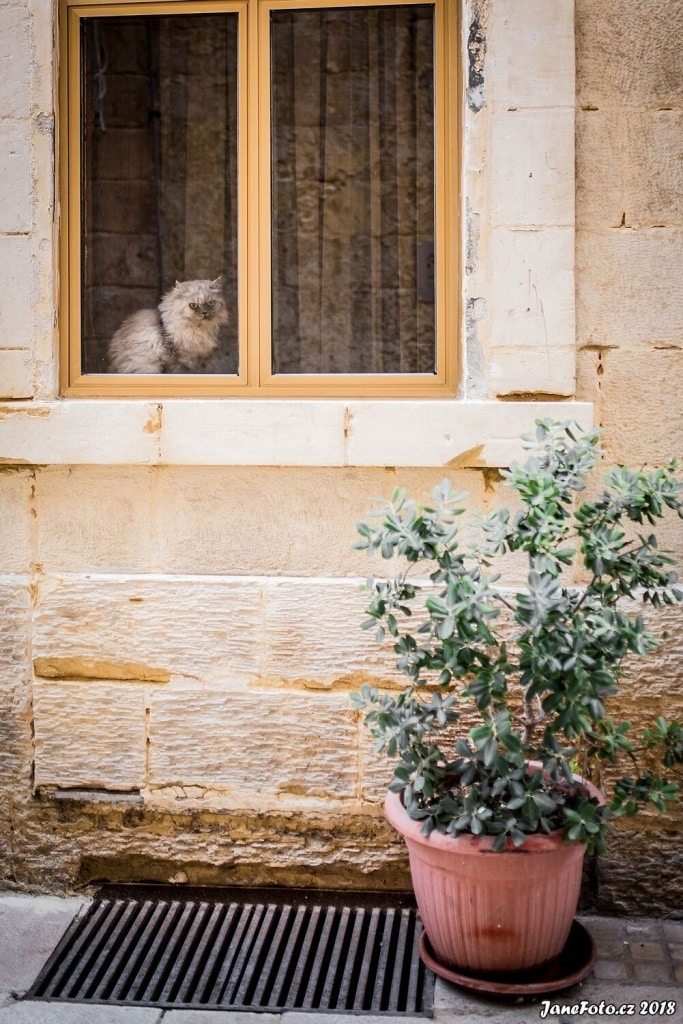
Nikon D750 + Sigma ART 35/1.4 1/250 f/1.4 ISO 800 – because of the darkness and the cat looking around, the ISO increased, reducing the shot length to 1/250 seconds and enabling a sharp picture. (Author: Jana Mackova, janefoto.cz)
There are no comments yet.